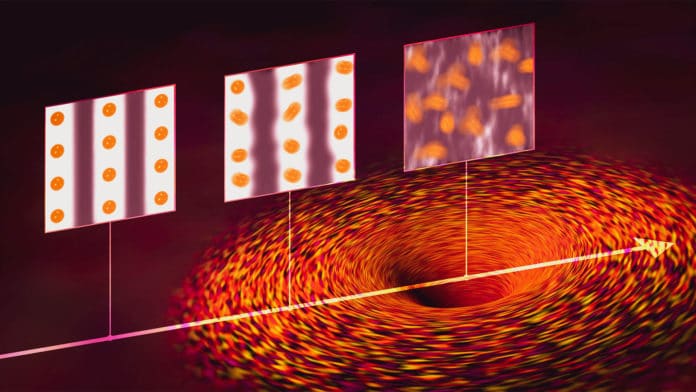Quantum critical points are a very hot issue and interesting for many problems. They are believed to be analogous to black holes in the sense that they are singularities — point-like intersections between different states of matter in a quantum material — where you can get all sorts of bizarre electron behavior as you approach them.
High-temperature superconductors such as Copper oxide possess multiple exotic orders that coexist with or are proximal to superconductivity. Quantum fluctuations associated with these orders may account for the normal state’s unusual characteristics and possibly affect the superconductivity.
Yet, spectroscopic evidence for such quantum fluctuations remains elusive.
A new study offered evidence that QCPs and their associated fluctuations exist. Using resonant inelastic X-ray scattering (RIXS), scientists identified a copper oxide material or cuprate’s electronic behavior.
In experiments at the UK’s Diamond Light Source, they chilled the cuprate to temperatures below 90 kelvins to make it superconductive. They focused their attention on what’s known as charge order — alternating stripes in the material where electrons and their negative charges are denser or more sparse.
The scientists excited the cuprate with X-rays and estimated the X-rays light that dispersed into the RIXS detector. This permitted them to outline how the excitations spread through the material as subtle vibrations, or phonons, in the material’s atomic lattice, difficult to gauge and require exceptionally high-resolution tools.
Simultaneously, the X-rays and the phonons can excite electrons in the charge order stripes, causing the stripes to fluctuate. Since the data obtained by RIXS reflects the coupling between the behavior of the charge stripes and the phonons’ behavior, observing the phonons allowed the researchers to measure the behavior of the charge order stripes, too.
Wei-Sheng Lee, a staff scientist at the Department of Energy’s SLAC National Accelerator Laboratory and investigator with the Stanford Institute for Materials and Energy Sciences (SIMES), said, “We were expecting to see that when the charge order stripes grew weaker, their excitations would also fade away. But what we observed was very strange. We saw that when the charging order became weaker in the superconducting state, the charge order excitations became stronger. This is a paradox because they should go hand in hand, and that’s what people find in other charge order systems.”
“To my knowledge, this is the first experiment about charge order that has shown this behavior. Some have suggested that this is what happens when a system is near a quantum critical point, where quantum fluctuations become so strong that they melt the charging order, much like heating ice increases thermal vibrations in its rigid atomic lattice and melts it into water. The difference is that quantum melting, in principle, occurs at zero temperature.”
“In this case, the unexpectedly strong charge order excitations seen with RIXS were manifestations of those quantum fluctuations.”
“The team is now studying these phenomena at a wider range of temperatures and at different levels of doping — where compounds are added to change the density of freely moving electrons in the material — to see if they can nail down exactly where the quantum critical point could be in this material.”
Thomas Devereaux, a theorist at SIMES and senior author of the report, noted that many phases of matter could be intertwined in cuprates and other quantum materials.
“Superconducting and magnetic states, charge order stripes, and so on are so entangled that you can simultaneously be in all of them. But we’re stuck in our classical way of thinking that they have to be either one way or another.”
Here, he said, “We have an effect, and Wei-Sheng is trying to measure it in detail, trying to see what’s going on.”
Journal Reference:
- W. S. Lee et al. Spectroscopic fingerprint of charge order melting driven by quantum fluctuations in a cuprate. Nature Physics, 2020; DOI: 10.1038/s41567-020-0993-7
